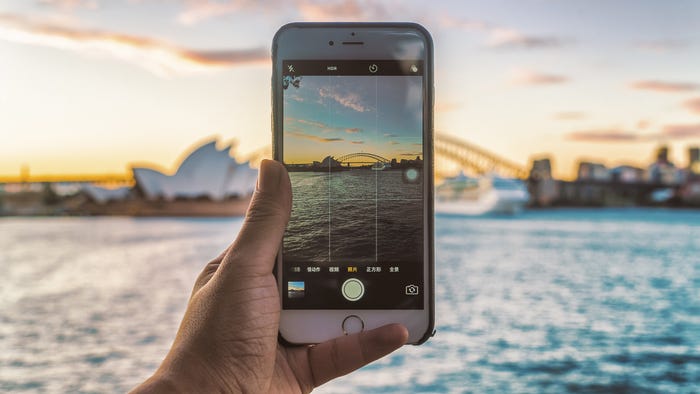
In Sydney, Nokia and Australian telco TPG Telecom have switched on the world's first standalone 5G on the 700MHz band. It is significant because low-band 5G offers a much broader range and coverage area, similar to that of 4G. Useful if you're trying to cover Australia.
Mid-band 5G is limited to several kilometers, and high-band 5G in the range of hundreds of metres.
Figure 1:  Wide vista: Running standalone 5G on the 700MHz band matters because low band 5G offers a much bigger coverage area.
Wide vista: Running standalone 5G on the 700MHz band matters because low band 5G offers a much bigger coverage area.
(Source: Unsplash)
The low-band 5G, which is powered by Nokia's AirScale radios based on the ReefShark chipset, will soon cover Australia's largest city – following initial tests last month in Parramatta in Western Sydney. TPG Telecom has the "goal of reaching 85% of the population in Australia’s top six cities by the end of the year," says the company's executive general manager Barry Kezik.
The operator also, clearly, is targeting a niche in the growing market of the Internet of Things (IoT), which benefits from a broader range - but may not require as much speed. Australian homes alone will contain over 47 million smart devices by 2022, estimates the country's National Science and Technology Council. The Nokia radars provide 3G, 4G, and 5G network, while the standalone bit means the 5G doesn't have to rely on existing 4G infrastructure.
"Together with TPG Telecom we are the first in history to switch on a live 5G standalone network on the 700MHz spectrum band!" tweeted Nokia, excitedly.
Advance, Australian 5G fair...
The Australian network provider is an operator in a hurry. Its A$11.4 billion (AUD 15 billion) merger with Vodafone Hutchison Australia, agreed in 2018, didn't complete until July 2020 after it met with heavy scrutiny from the regulators.
Meanwhile Telstra and Optus have stolen a 5G march – Telstra covering 200 towns and cities, and Optus recently announcing it has connected 1 million 5G devices to its network.
Together with @TPG_Telecom we are the first in history to switch on a live #5G standalone network on the 700MHz #spectrum band! Read more, here: https://t.co/7RH4Ii5z7F https://t.co/38GNTwCYv2
— Nokia (@nokia) July 6, 2021
TPG's strategy is to roll out stand-alone low-band as a quick catch up. Low-band refers to any spectrum lower than 1 GHz. Then later in 2021, fill in millimetre-wave 5G from its April spectrum winnings in the 26 GHz spectrum. In these auctions, TPG spent $81.5 million (A$108.2 million) on 400MHz in Sydney, Melbourne, and Perth, and 600MHz in areas including Brisbane.
Back to the beachfront
Other operators are eyeing similar "mopping up" strategies using the 700MHz spectrum to catch areas mid-band and mmWave spectrum can't reach. Japan's KDDI, for one, said in March that it is using Samsung equipment operating in the 700MHz spectrum as part of its goal of covering 90% of Japan's population by early 2022. It is a return to fashion for the low-band, which operators often referred to as "beachfront property" in the early days of wireless networks.
Want to know more about 5G? Check out our dedicated 5G content channel here on
Light Reading.
Using low-band 800MHz spectrum, analog cellular providers could serve thousands of customers within square miles with a single tower. The 700MHz spectrum provides "deep indoor penetration, a reliable uplink and large coverage," notes a Nokia white paper.
The tradeoff of lower band 5G, though, is that in speed and latency, it is generally only incrementally better than what is delivered with 4G networks.
Even in the brave new world of 5G, you can't have it all.
Related posts:
— Pádraig Belton, contributing editor special to Light Reading
Read more about:
AsiaAbout the Author(s)
You May Also Like












